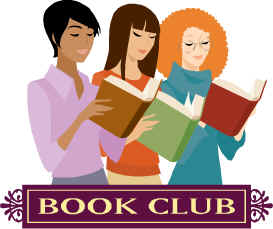
Hannibal Free Public Library
Today Will Be Different
by
Maria Semple
June 21, 2021
2:30 – 4:00 p.m.
|
|
Hannibal Free Public Library Today Will Be Different by Maria Semple June 21, 2021 2:30 – 4:00 p.m. |
Today Will Be Different takes place over the course of a single day and tells a hilarious and life-affirming story about a woman who wakes up determined to be her best self… until life intervenes. The book chronicles the journey of a frazzled Seattle illustrator and animator named Eleanor Flood, and is anchored by a mini graphic novel that’s attributed to Eleanor, but in real life was illustrated by Eric Chase Anderson.
Born in Santa Monica, California, Semple currently lives in Seattle, Washington, where she is active in the city’s literary community. Semple is a founding member of Seattle 7 Writers, and has taught fiction writing at Richard Hugo House. Semple is in a relationship with George Meyer (The Simpsons), and they have one daughter, Poppy. Semple's novels are This One is Mine (2008), the bestselling Where'd You Go, Bernadette (2012), and the recently published Today Will Be Different (2016).
1. The first part of Today Will Be Different is called “The Trick.” In a later part of the book, Eleanor refers to “The Trick” and says, “Anytime I get into a one-on-one social situation, especially if there’s something at stake, my anxiety spikes. I talk fast. I jump topics unexpectedly. I say shocking things. Right before I push it too far, I double back and expose a vulnerability. If I see you about to criticize me, I leap in and criticize myself.” Where did you see this happening in the book?
2. One reason that Eleanor has not been more present in her daily life is the anxiety she feels about writing her book and the dark cloud of avoidance that hangs over it. She is also very self-deprecating when she talks about herself. Are there times when her anxiety, avoidance or sarcasm make her an unreliable narrator? Are there times when you’ve felt the same way about your own life?
3. Eleanor has a tempestuous relationship with her friend Sydney Madsen. Semple writes, “She’s like Parkinson’s, you can’t cure her, you can just manage the symptoms.” Do you have a friendship like this? Why do you think Eleanor feels that she has to maintain the friendship?
4. In the part titled, “The Flood Girls” Semple shows us the comic Eleanor wrote that is the inspiration for her book. In what way does seeing the comic, and learning more about Eleanor’s past, help to illuminate her interior life?
5. Eleanor and Ivy are pulled apart by Bucky, the derringers, and the drama in New Orleans. Despite their differences, Eleanor desperately misses her sister. Were you surprised by the twists and turns that their relationship takes? Do you think they might one day be able to reconcile?
6. Throughout the novel, Eleanor explains herself as having a predictable and steadfast, albeit messy, personality. Are there aspects of one’s character that are immovable? Does Eleanor need to change, or does she just need to accept who she is?
7. Throughout the story, Eleanor is trying to uncover Joe’s secret. Were you able to predict what it would be? Or were you surprised by it? Why or why not?
8. Eleanor’s poetry teacher, Alonzo, asks her to memorize Robert Lowell’s “Skunk Hour” in advance of their lesson. At the end of the book, he assigns Elizabeth Bishop’s “One Art.” How do you think these poems connect to the plot and to Eleanor’s state of mind?
9. Eleanor composes a Gratitude List to help her maintain a loving relationship with Joe. She also creates a catalog of grievances in her mind. Are the grievances large enough to tip the scale? Can a marriage be quantified in this way?
10. Today Will Be Different begins and ends with Eleanor’s incantation, “Today will be different. Today I will be present…” Why do you think Maria Semple chose to open and close the book with these words? How has Eleanor changed over the course of the day in which the novel takes place-and how do you predict the next day will be different for Eleanor?
Adapted
from:
https://www.cmlibrary.org/sites/default/files/TWBD%20Study%20Guide.pdf